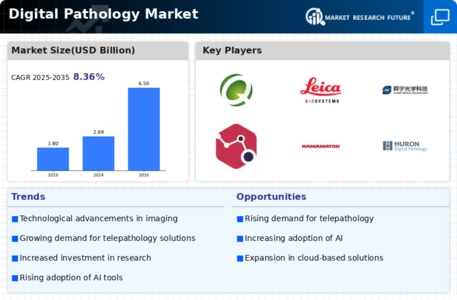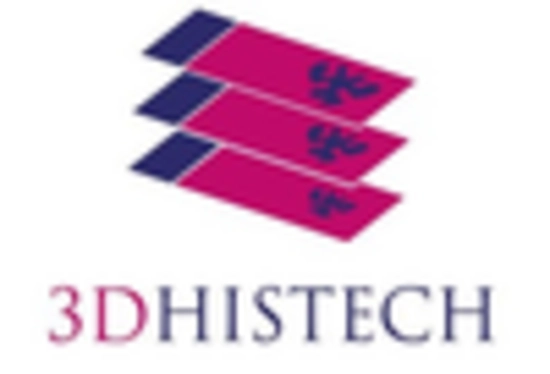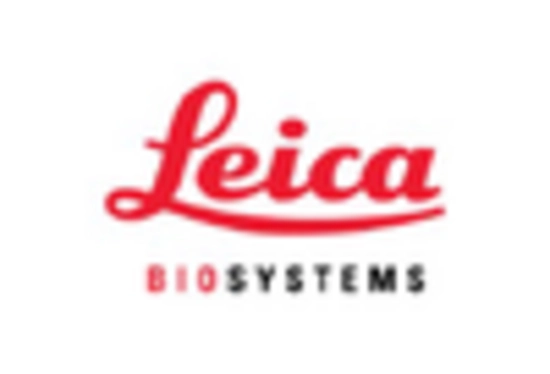Focus on Personalized Medicine
The Digital Pathology Market is increasingly aligning with the growing emphasis on personalized medicine. As healthcare shifts towards tailored treatment plans based on individual patient profiles, digital pathology plays a crucial role in providing precise diagnostic information. Advanced imaging techniques and data analytics enable pathologists to identify specific biomarkers and genetic information that inform treatment decisions. This trend is expected to drive the market forward, with projections indicating a potential increase in market size by approximately 15% over the next few years. The integration of personalized medicine into the Digital Pathology Market is likely to enhance patient care and optimize therapeutic outcomes.
Rising Incidence of Chronic Diseases
The Digital Pathology Market is significantly influenced by the rising incidence of chronic diseases, which necessitates advanced diagnostic tools. As the prevalence of conditions such as cancer, diabetes, and cardiovascular diseases continues to increase, there is a growing need for efficient and accurate diagnostic methods. Digital pathology offers enhanced capabilities for disease detection and monitoring, allowing for timely interventions. Market analyses indicate that the demand for digital pathology solutions is likely to rise in tandem with the increasing burden of chronic diseases, with projections suggesting a growth rate of approximately 11% annually. This trend underscores the critical role of the Digital Pathology Market in addressing contemporary healthcare challenges.
Increased Demand for Remote Solutions
The Digital Pathology Market is witnessing a surge in demand for remote solutions, particularly in the context of telepathology. This trend is largely driven by the need for efficient healthcare delivery, especially in underserved regions. Remote pathology solutions allow for the sharing of digital slides and images across distances, enabling pathologists to collaborate and consult with specialists without geographical constraints. The market for telepathology is expected to expand significantly, with estimates suggesting a growth rate of around 12% annually. This demand for remote solutions is reshaping the Digital Pathology Market, as healthcare providers seek to enhance their service offerings and improve access to expert opinions.
Regulatory Support and Standardization
The Digital Pathology Market is benefiting from increasing regulatory support and efforts towards standardization. Regulatory bodies are recognizing the importance of digital pathology in enhancing diagnostic processes and are establishing guidelines to ensure quality and safety. This support is crucial for the adoption of digital pathology solutions in clinical settings. Furthermore, standardization initiatives are aimed at creating uniform protocols for digital imaging and data sharing, which can facilitate interoperability among different systems. As these regulations evolve, they are expected to bolster confidence in digital pathology technologies, potentially leading to a market growth rate of around 10% in the coming years. This regulatory landscape is shaping the future of the Digital Pathology Market.
Technological Advancements in Digital Pathology
The Digital Pathology Market is experiencing rapid growth due to continuous technological advancements. Innovations such as artificial intelligence and machine learning are enhancing diagnostic accuracy and efficiency. These technologies enable pathologists to analyze large volumes of data quickly, thereby improving patient outcomes. The integration of digital imaging and cloud-based solutions is also facilitating remote consultations and second opinions, which are increasingly sought after in the healthcare sector. According to recent estimates, the market is projected to grow at a compound annual growth rate of over 10% in the coming years, driven by these advancements. As a result, the Digital Pathology Market is poised for significant transformation, with new tools and platforms emerging to support pathologists in their work.

















Leave a Comment